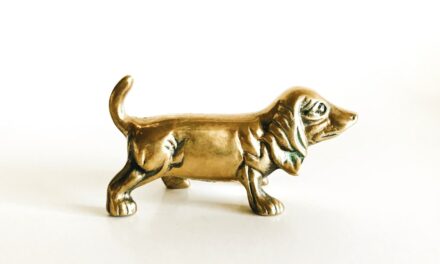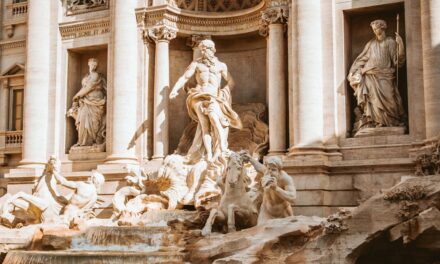Henri de Toulouse-Lautrec was born on 24 November 1864 in Albi, France, into an aristocratic family. His parents were first cousins, and as a consequence of this consanguineous union, Toulouse-Lautrec experienced numerous health complications throughout his life. He was a frail child and suffered from a congenital disorder that impeded the growth of his legs, resulting in an adult height of only 142 centimetres.
Despite his physical challenges, Toulouse-Lautrec exhibited an early talent for drawing and painting, which his parents actively encouraged. The Toulouse-Lautrec family had a long-standing tradition of art patronage, and Henri was exposed to artistic pursuits from a young age. His parents supported his artistic aspirations and provided him with an excellent education.
He studied under notable artists such as René Princeteau and Léon Bonnat, and subsequently attended the esteemed Atelier Cormon in Paris. It was during his time in the French capital that Toulouse-Lautrec began to cultivate his distinctive artistic style, which would later become closely associated with the bohemian culture of the city.
Summary
- Toulouse-Lautrec was born into an aristocratic family in Albi, France, and was encouraged to pursue art from a young age.
- His artistic style was heavily influenced by Japanese prints and the work of Edgar Degas, and he became known for his use of bold colours and expressive lines.
- Toulouse-Lautrec embraced the bohemian lifestyle in Paris, frequenting cabarets and brothels, and his experiences in these environments heavily influenced his work.
- Some of his most famous works include posters for the Moulin Rouge and paintings of the Parisian nightlife, and his legacy continues to inspire artists today.
- Toulouse-Lautrec’s impact on modern art can be seen in his innovative use of composition and his ability to capture the essence of his subjects in a raw and unfiltered way.
Artistic Style and Influences
Influences and Inspirations
Toulouse-Lautrec’s paintings often depicted scenes from Parisian nightlife, such as cabarets, dance halls, and brothels. He had a keen eye for capturing the energy and excitement of these environments, and his use of vibrant colours and dynamic brushwork brought these scenes to life.
Artistic Techniques
One of Toulouse-Lautrec’s most distinctive artistic techniques was his use of flattened perspectives and bold outlines, which gave his paintings a graphic quality. He also had a talent for capturing the essence of his subjects with just a few deft brushstrokes, and his portraits are known for their emotional depth and psychological insight.
Legacy and Impact
Toulouse-Lautrec’s work was groundbreaking in its time, and it had a profound influence on the development of modern art.
The Bohemian Lifestyle in Paris

Toulouse-Lautrec was deeply immersed in the bohemian lifestyle of late 19th-century Paris. He frequented the cabarets and dance halls of Montmartre, where he found inspiration for many of his most famous works. He was a regular at the Moulin Rouge, a popular nightclub known for its extravagant shows and colourful characters.
Toulouse-Lautrec was fascinated by the performers and patrons of these establishments, and he often portrayed them in his paintings with empathy and understanding. The bohemian lifestyle of Paris provided Toulouse-Lautrec with a rich source of material for his art, and he became known for his ability to capture the essence of this world in his work. His paintings and posters celebrated the vitality and diversity of Parisian nightlife, and they offered a glimpse into a world that was both alluring and gritty.
Toulouse-Lautrec’s art captured the spirit of an era, and it continues to be celebrated for its evocative portrayal of bohemian Paris.
Famous Works and Legacy
Toulouse-Lautrec’s most famous works include his posters for the Moulin Rouge, which are iconic symbols of the Belle Époque. These posters were revolutionary in their use of bold colours and simplified forms, and they had a lasting impact on the world of advertising and graphic design. Toulouse-Lautrec’s paintings of dancers and performers at the Moulin Rouge are also widely celebrated for their energy and dynamism.
His portraits of friends and acquaintances, such as the dancer Jane Avril and the singer Aristide Bruant, are renowned for their emotional depth and psychological insight. Toulouse-Lautrec’s legacy extends far beyond the world of art. His work has had a profound influence on popular culture, and his images have been reproduced countless times in books, films, and advertisements.
His distinctive style continues to inspire artists and designers around the world, and his impact on modern art cannot be overstated. Toulouse-Lautrec’s work remains as relevant today as it was during his lifetime, and he is widely regarded as one of the most important artists of the late 19th century.
Toulouse-Lautrec’s Impact on Modern Art
Toulouse-Lautrec’s impact on modern art is far-reaching and enduring. His use of bold colours, flattened perspectives, and simplified forms anticipated many of the developments in 20th-century art, such as Fauvism and Cubism. His innovative approach to composition and subject matter paved the way for new ways of seeing and representing the world.
Toulouse-Lautrec’s influence can be seen in the work of artists such as Pablo Picasso, Henri Matisse, and Georges Braque, who were all inspired by his revolutionary approach to painting. Toulouse-Lautrec’s legacy also extends to the world of graphic design and advertising. His posters for the Moulin Rouge revolutionised the way that commercial art was created and consumed, and they continue to be celebrated for their boldness and originality.
Toulouse-Lautrec’s work has had a lasting impact on the field of visual communication, and his images are still used as a benchmark for excellence in design. His ability to capture the essence of a subject with just a few bold strokes has inspired generations of artists and designers, and his influence can be felt in every aspect of visual culture.
Personal Struggles and Health Issues

Struggles with Personal Demons
Despite his success as an artist, Toulouse-Lautrec struggled with personal demons throughout his life. He turned to drink as a means of coping with his physical pain and emotional turmoil, and he developed a serious drinking problem that would ultimately contribute to his early demise. Toulouse-Lautrec’s alcoholism had a detrimental effect on his health, exacerbating his existing health issues and leading to a rapid decline in his physical condition.
The Toll on His Mental Well-being
Toulouse-Lautrec’s health issues also took a toll on his mental well-being. He suffered from bouts of depression and anxiety, which were exacerbated by his feelings of isolation and alienation. His physical limitations made it difficult for him to form lasting relationships, and he often felt like an outsider in the world that he depicted so vividly in his art.
Unwavering Commitment to His Art
Despite these struggles, Toulouse-Lautrec continued to produce groundbreaking work until the end of his life, demonstrating an unwavering commitment to his artistic vision.
Toulouse-Lautrec’s Enduring Influence on Popular Culture
Toulouse-Lautrec’s enduring influence on popular culture is evident in the countless references to his work in literature, film, music, and fashion. His images have become synonymous with the glamour and excitement of bohemian Paris, and they continue to be celebrated for their evocative portrayal of this world. Toulouse-Lautrec’s posters have been reproduced on everything from t-shirts to tote bags, ensuring that his work remains accessible to new generations of art lovers.
Toulouse-Lautrec’s impact on popular culture extends beyond the world of visual art. His life has been the subject of numerous biographies, novels, plays, and films, all of which seek to capture the essence of this enigmatic figure. His legacy has also been celebrated in music, with songs dedicated to him by artists such as Elton John and Sting.
Toulouse-Lautrec’s enduring influence on popular culture is a testament to the power of his art to captivate and inspire audiences across time and space.
If you are interested in learning more about the art movements that influenced Henri Toulouse-Lautrec, you should check out this article on Post-Impressionism. This movement, which emerged in the late 19th century, was characterised by artists’ use of vivid colours, thick brushstrokes, and a focus on emotional expression. Toulouse-Lautrec was heavily influenced by Post-Impressionist artists such as Vincent van Gogh and Paul Cézanne, and his own work reflects the movement’s emphasis on subjective interpretation and personal expression.
FAQs
Who was Henri Toulouse-Lautrec?
Henri Toulouse-Lautrec was a French painter, printmaker, and illustrator who is best known for his iconic depictions of Parisian nightlife in the late 19th century.
What was Henri Toulouse-Lautrec known for?
Toulouse-Lautrec was known for his distinctive style and his portrayal of the bohemian and decadent atmosphere of Parisian cabarets, dance halls, and brothels.
What influenced Henri Toulouse-Lautrec’s art?
Toulouse-Lautrec was influenced by Japanese printmaking, Impressionism, and the work of Edgar Degas. He was also inspired by the vibrant and diverse nightlife of Paris.
What medium did Henri Toulouse-Lautrec work in?
Toulouse-Lautrec primarily worked in lithography, creating bold and expressive posters and prints. He also worked in oil paint and created numerous drawings and sketches.
What is Henri Toulouse-Lautrec’s most famous artwork?
One of Toulouse-Lautrec’s most famous works is the poster he created for the Moulin Rouge cabaret, featuring the dancer La Goulue. This poster has become an iconic image of the Belle Époque era.
What was Henri Toulouse-Lautrec’s impact on the art world?
Toulouse-Lautrec’s innovative use of composition, colour, and subject matter had a significant impact on the development of modern art. His work continues to be celebrated for its unique and evocative portrayal of Parisian nightlife.




